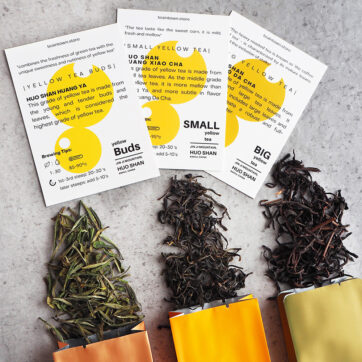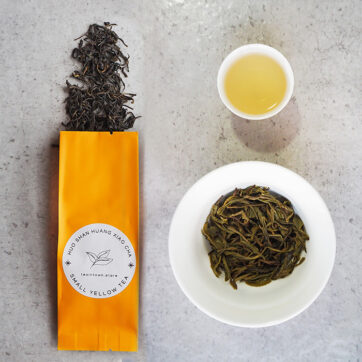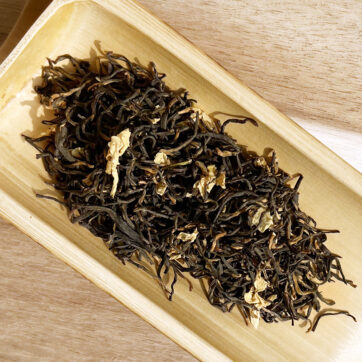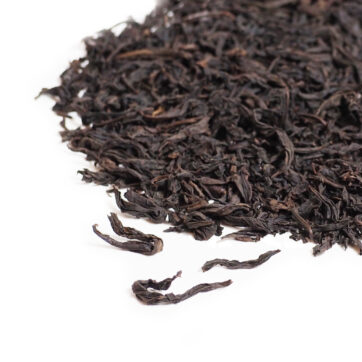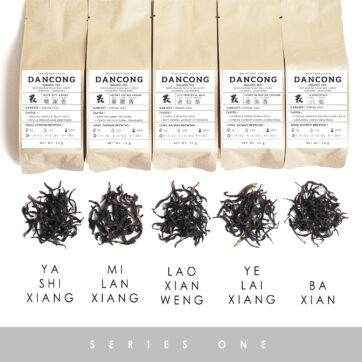Huo Shan Big Yellow Tea
Huo Shan Huang Da Cha霍山黄大茶
“The heavy roasted tea is known as ‘the coffee of tea’ – is characterised by its mature leaves and the inclusion of stalks”
Huo Shan Big Yellow Tea, also called Huo Shan Huang Da Cha, which is made from mature and larger tea leaves than those used for other grades of yellow tea. Due to its heavy roasted taste, the tea is known as ‘the coffee of tea’. Unlike other teas that prioritize fine leaves and buds, it deliberately includes larger leaves and stalks to create a robust and full-bodied character. Its plucking standard is one buds and four to five leaves, with large leaves and stalks, and a general length of 10 to 15 cm, which gives the tea a stronger flavor and aroma and has a slightly smoky and roasted flavor with a sweet aftertaste, it is typically more robust in flavor than other grades of yellow tea.
Limited batch from Ji Ji Shan
This year, we find this very limited batch of traditional handmade Huo Shan Big Yellow Tea from the renowned yellow tea producing mountain – Jin Ji Shan of the Huo Shan region, located in Anhui Province, China. Huo Shan, is a famous yellow tea producing area since Tang Dynasty, and Jin Ji Shan is one of the most famous tea mountains of Huo Shan, which is known for producing high-quality yellow tea. It is located in Da Hua Ping town of Huoshan, located next to the White Horse Tip (the main peak of Da Bie Mountain).
The growing environment of Jin Ji Shan is characterized by a high altitude, cool climate, and a unique type of soil, which gives the tea its distinctive flavor and aroma. We’ve sum up some facts and statistics about the mountain:
- The mountain is neither too high nor too low, which is more than 700m above sea level, which is very suitable for the growth of tea tree.
- It is also rich in light resources, it has 1881 hours of sunshine annually
- The average monthly temperature is below 25 degrees Celsius
- Annual precipitation is more than 1800 mm, with an average annual relative humidity of 78%.
- The foreast coverage rate on Jin Ji Mountain is as high as 80%, provide natural organic fertilizer for tea plantations.
All of these factors are very beneficial to the accumulation of amino acids and aromatic substances in the tea tree and the tea produced in Jin Ji Shan is known for its exceptional quality and is considered one of the finest varieties of yellow tea.
Appearance of Huo Shan Big Yellow Tea
Huo Shan Big Yellow Tea is usually made of one bud four to five leaves. The dry leaves looks big and fat leaves with long and strong stalk, and it is in yellow-brown colour. The tea liquor is in clear and yellow orange colour.
Taste of Huo Shan Big Yellow Tea
Huo Shan Big Yellow Tea offers a strong aroma, with nutty, toasty and roasted flavor, burnt sugar notes, it also comes with a special hints of caramel, rice crust aroma, roasted popped rice.
Making Process of Yellow Tea
Yellow tea is crafted through a meticulous process that sets it apart from other types of tea. While the specific making process may vary depending on the grade and style of yellow tea, there are fundamental steps that generally define the production of yellow tea:
- Harvesting: The first step in making yellow tea is harvesting the tea leaves.
- Withering: The freshly picked tea leaves are spread out in a thin layer and left to wither for a few hours. This process removes excess moisture from the leaves and prepares them for the next step.
- Fixation/ Kill-Green: The withered tea leaves are then placed in a hot wok or pan and quickly heated to stop the oxidation process. This step is known as fixation or “kill-green,” and it helps to preserve the natural flavors and aromas of the tea.
- Rolling: The fixed tea leaves are then rolled or shaped into long, thin strips or pellets. This helps to break down the cell walls of the leaves and release the natural oils and flavors.
- Smothering/ Meng Huang: The rolled tea leaves are then wrapped in a damp cloth or paper and left to “smother” for a few hours. This step allows for a slow and controlled oxidation process, which gives yellow tea its unique flavor and aroma.
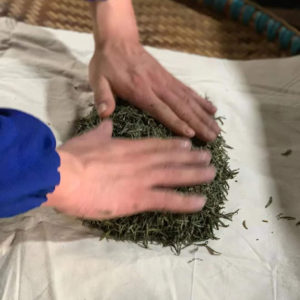

- Baking and drying: For the final step, the tea is roasted to lift the aroma and flavour. The smothered and roasted tea leaves are then dried in a warm and well-ventilated area until they are completely dry. This step helps to remove any remaining moisture from the leaves and preserve their freshness.
The role of oxidation in the making step of smothering
Oxidation, specifically facilitated by the smothering (Meng Huang) step, is a fundamental aspect of yellow tea production. It contributes significantly to the development of the unique characteristics of yellow tea, including its yellow color, distinctive flavor profile, and aromatic qualities.
Yellow tea typically undergoes a light/ moderate level of oxidation, which sets it apart from other types of tea. The oxidation level of yellow tea can vary, but it generally falls within the range of 10-20%. Compared to green tea, which undergoes minimal oxidation (0-10%), and black tea, which undergoes higher levels of oxidation (around 100%), yellow tea can be considered a “light oxidation” tea.
The oxidation level of yellow tea is closely related to the smothering step in its production process. During the smothering step, the tea leaves are wrapped in cloth or paper, which creates a semi-anaerobic (low-oxygen) environment. This controlled environment allows for a gradual oxidation process to occur within the tea leaves. Under the action of humidity and heat, chlorophyll is destructed; polyphenols compounds and other substances are transformed due to partial oxidation. This process gives the tea its characteristic yellow color, as well as enhances the natural sweetness and aroma of the tea, while also reducing bitterness and astringency. It contributes to the mellow and slightly sweet taste that sets yellow tea apart from green tea, while still maintaining a lighter oxidation level compared to black tea.
Weight per pack: 25g/ 50g/ 100g
Tea Farm Location: Jin Ji Shan, Huo Shan, Anhui, China
Harvest Time: 2022 Spring
Tasting Notes: strong aroma, nutty, toasty and roasted flavor, burnt sugar, caramel, rice crust aroma, roasted popped rice
Tea Liquor Colour: bright and clear yellow orange colour
Dry Leave Appearance: one bud four to five leaves. The dry leaves looks big and fat leaves with long and strong stalk, and it is in yellow-brown colour.
Wet Leaves: brown
Know more about 3 Grades of Yellow Tea
Yellow tea is generally classified into three grades, which are based on the quality of the tea leaves used to make the tea. These grades are: Yellow Tea Buds (Huang Ya), Small Yellow Tea (Huang Xiao Cha) and Big Yellow Tea (Huang Da Cha). You can learn more about it by trying our 3 Grades of Yellow Tea – Huo Shan Yellow Tea Selection Box
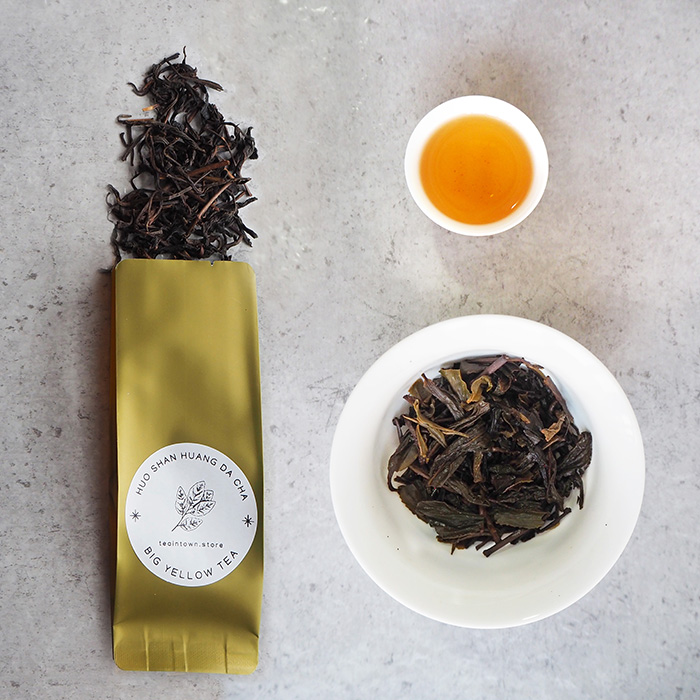
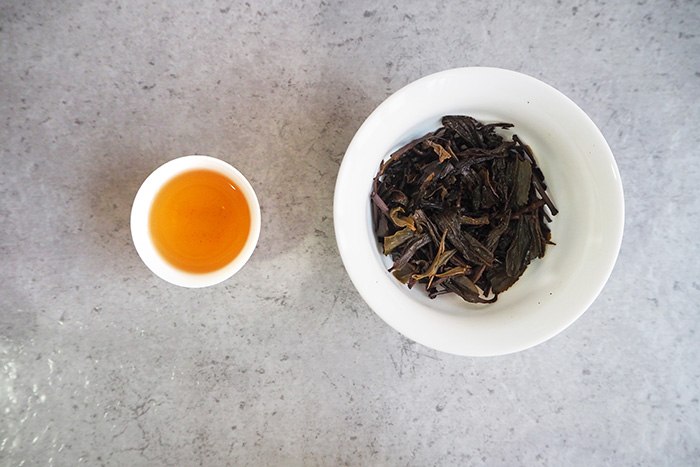
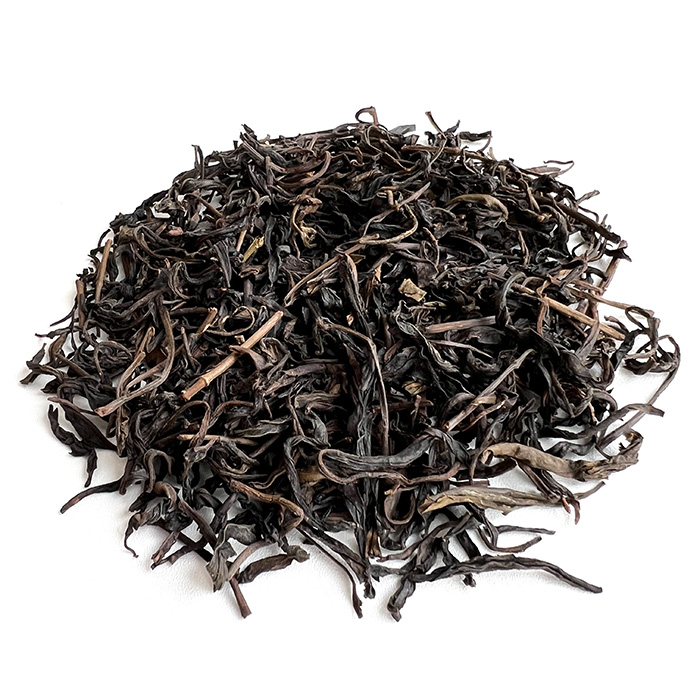

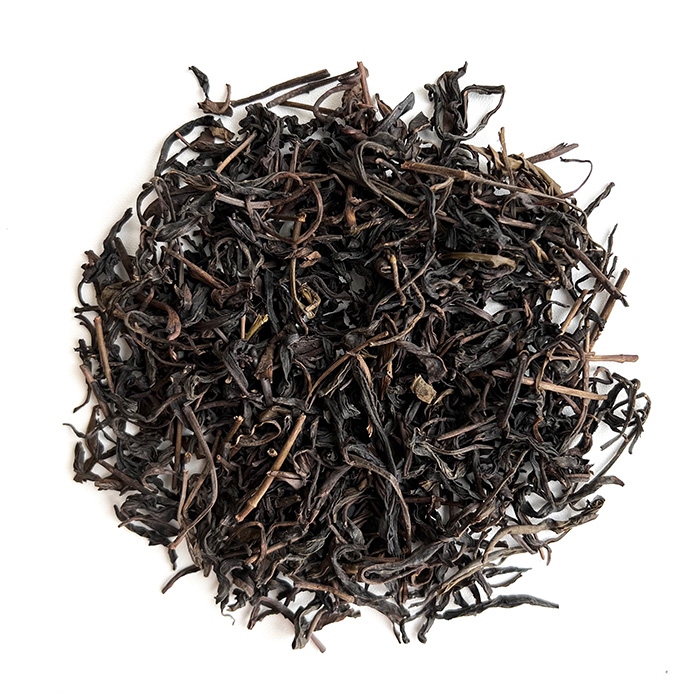
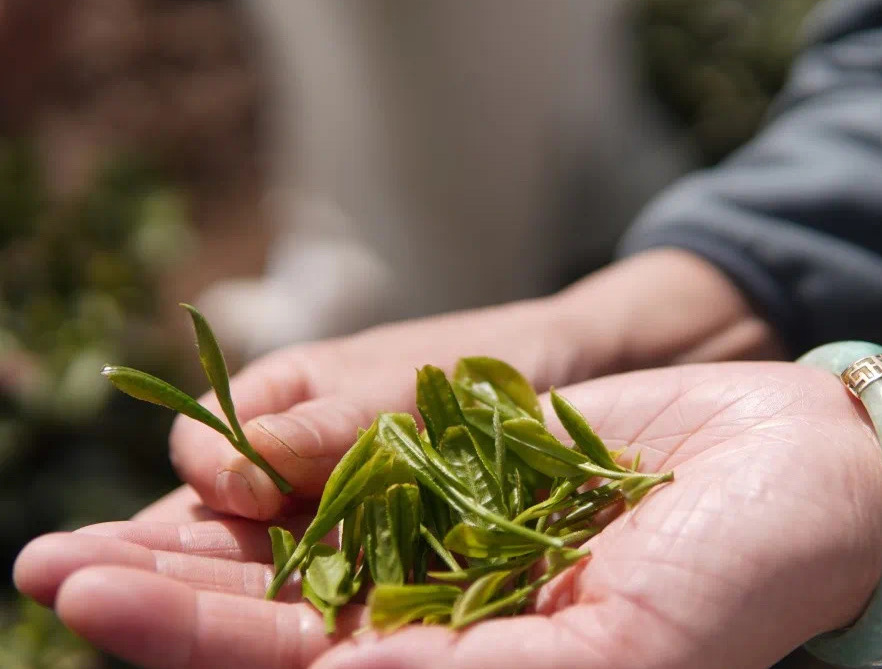


 If you purchase this product you will earn
If you purchase this product you will earn 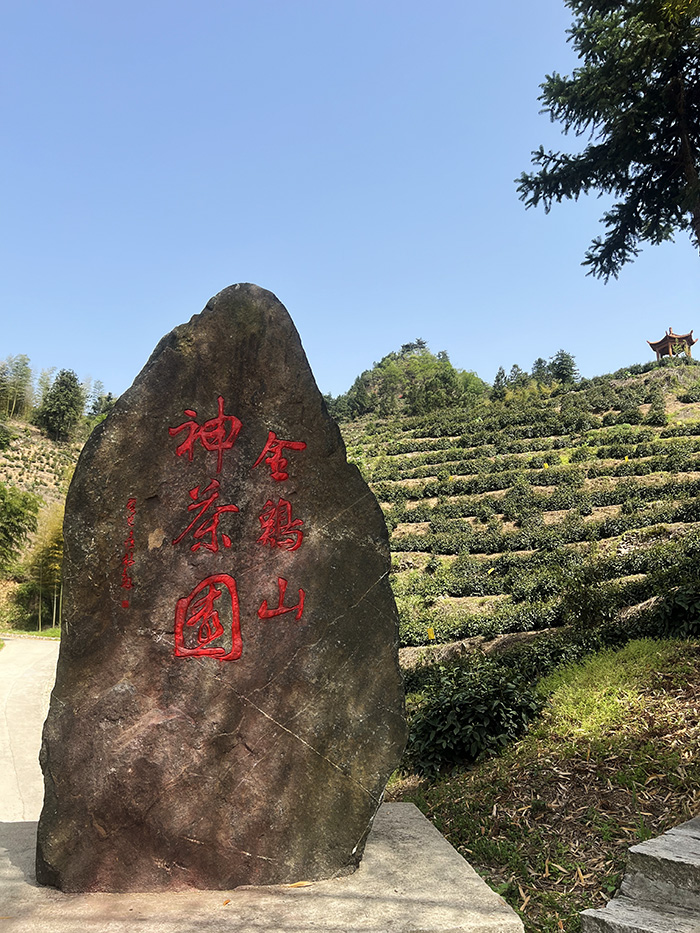
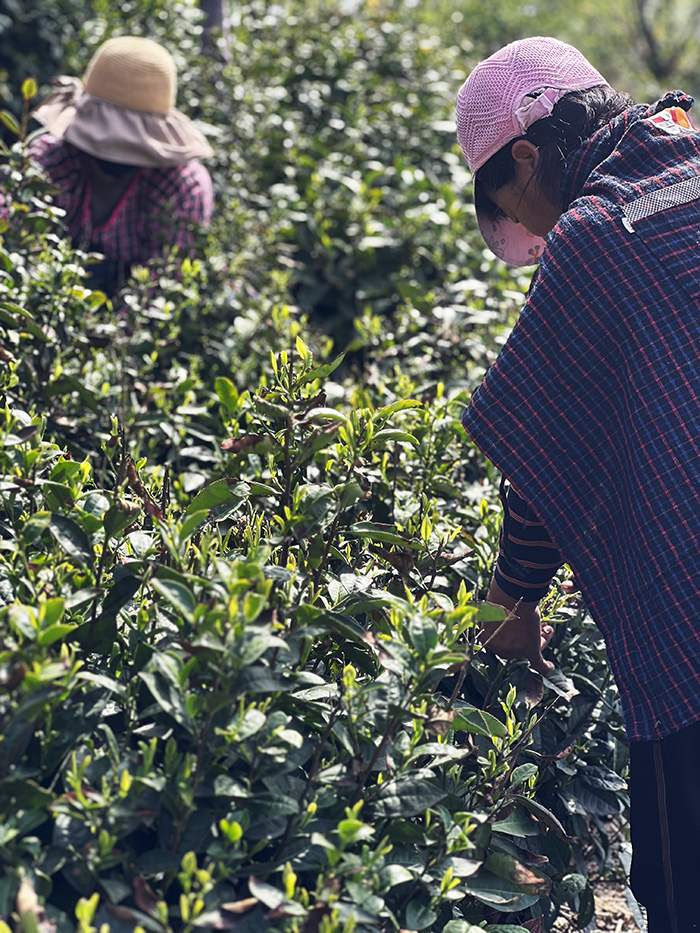

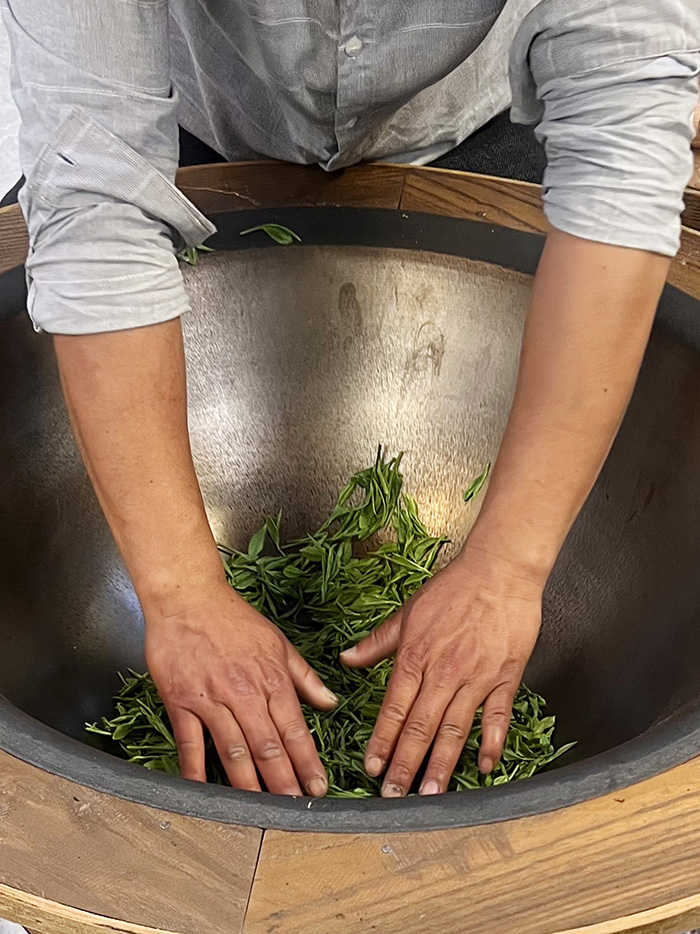



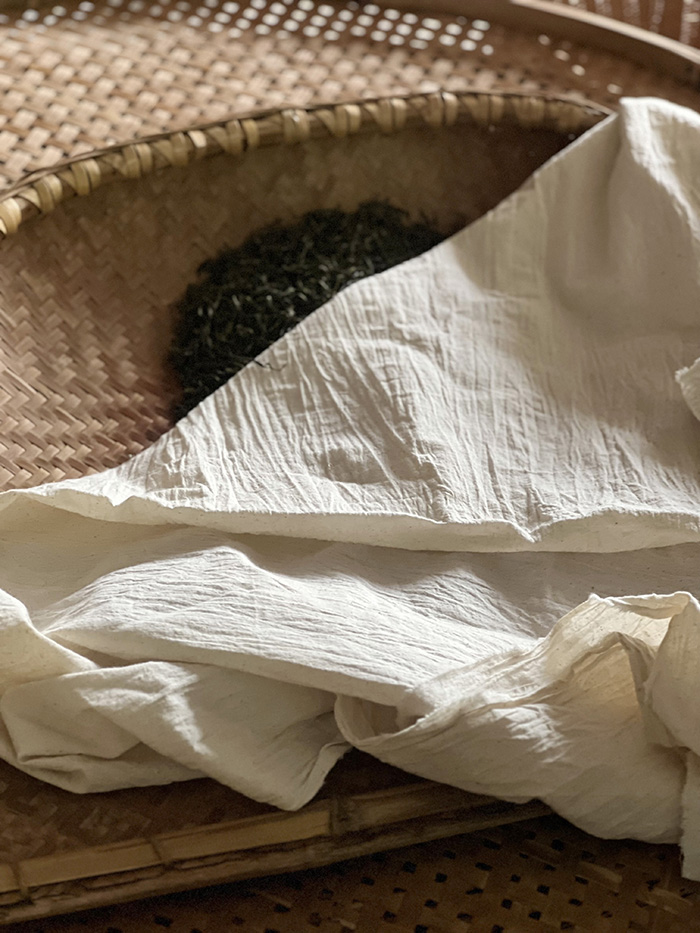


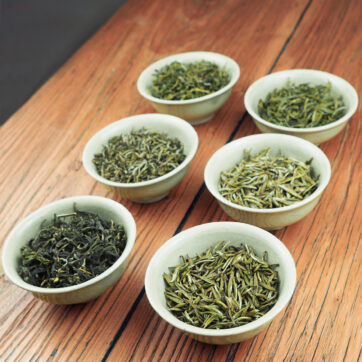
![[Pre-Sale 10% off] 2025 Huo Shan Huang Ya Yellow Tea](https://teaintown.store/wp-content/uploads/2025/04/5dbf36de-ac5f-4df5-aa5f-84cf89731d7b-1-362x362.jpg)
